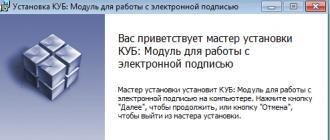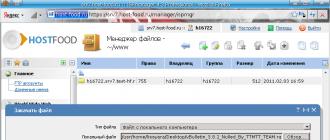This program is designed to increase transparency and openness of the core activities of government agencies and is responsible for the management of public finances.
With the help of the GIS “Electronic Budget” planning program, the quality of management of government agencies is improved through the introduction of information and communication technologies and the creation of a unified information space in the management environment of state, municipal, and public finances.
The concept for developing the creation of the GIIS “Electronic Budget” was confirmed in RP No. 1275-r dated July 20, 2011. The operating procedure of the system is regulated by Government Decree No. 658 of June 30, 2015.
The system consists of several subsystems aimed at achieving certain goals in the financial sector:
- procurement management;
- HR management;
- budget planning;
- cash management;
- income and expense management;
- management of regulatory reference information, etc.
The following users must register and work in the program:
- bodies of state power and local self-government, as well as state extra-budgetary funds;
- organizations that are participants in the budget process and financed through the state budget, as well as legal entities receiving funds from the budget of the Russian Federation;
- individuals and other persons - participants in the budget process;
- organizations carrying out procurement activities in accordance with the norms of 223-FZ.
Placement of schedules is carried out using the “Financial Management” subsystem, if the customer is the Russian Federation. BU, AU at the federal and municipal level, as well as other customer organizations can create and publish schedule plans directly in the Unified Information System. Institutions must duplicate all procurement documentation in the electronic book (Order of the Ministry of Finance No. 173n dated December 29, 2014), and then transfer it to TOFK.
"Electronic budget" of the Ministry of Finance and the Federal Treasury
Login using the “Electronic Budget” certificate of the Ministry of Finance is carried out using the link http://ssl.budgetplan.minfin.ru. Using the subsystems located on the Ministry of Finance website, you can carry out the following actions:
- study information on filling out forecast forms;
- formulate state assignments and budget estimates;
- implement accounting and budget accounting procedures for institutions;
- view various registers and reference information;
- fill out information and documentation on government order procedures and procurement activities;
- ensure information interaction;
- create, save and send to the authorized body documentation on planning and execution of the budget, as well as on the implementation of control measures, etc.
The “Electronic Budget” system of the Federal Treasury has the following functionality:
- maintaining a consolidated register of UBP and NUBP;
- interaction with the official website www.bus.gov.ru;
- development and maintenance of various industry lists;
- work with the Unified Portal of the Budget System of the Russian Federation;
- procurement management;
- record keeping and reporting;
- cost management.
Connection and getting started
The regulations for connecting, logging into the “Electronic Budget” (personal account) and starting work in it are fixed in the letter of the Ministry of Finance of the Russian Federation No. 21-03-04/35490 dated 06/17/2016. First of all, the organization must issue an order appointing persons responsible for work in the electronic security system and identifying employees authorized to prepare documentation placed in the subsystems. The order must confirm the responsibilities of each responsible employee. The order must necessarily contain signatures indicating that each employee is familiar with the contents of the internal organizational document.
SAMPLE ORDER (picture)
In order to start working, the user must:
1. Carry out a complete diagnosis and preparation of automated workstations for work with GIIS “EB” in accordance with the requirements established in Appendix 1 to the Connection Procedure.
2. Prepare qualified digital signature keys for each performer. New keys are obtained only for those who have not previously worked in the UIS. The rest can use their digital signatures that are valid in the Unified Information System.
3. Install the Windows Installer software, all necessary drivers for the user certificate media, the Continent TLS Client and Jinn-Client programs.

4. Complete and send to TOFK an application for connection using a special unified form (letter of the Ministry of Finance No. 21-03-04/61291 dated 10/20/2016). The application must be accompanied by an order for the appointment of responsible persons, files of digital signature certificates, consent signed by each responsible employee for the processing of personal data, an application and power of attorney to receive cryptographic information in the form approved by the Ministry of Finance (letter No. 21-03-04/35490 dated 06/17/2016) .
5. Wait for the results of checking the package of documents submitted to TOFK with the application for connection, and, if necessary, make all corrections and additions.
6. Upon successful verification, install CIPF at the workplace, register new performers in the Unified Information System, install new EDS key certificates and enter data on responsible employees into the electronic system while simultaneously defining the roles of each performer.


7. Connect to the “Electronic Budget” system, enter your personal account and start working in it.
The state information system “Electronic Budget” was created by the Ministry of Finance of the Russian Federation. What is “Electronic Budget”, what is its structure and how to work with it, we will tell you in the article.
What is “Electronic budget”
This is a state integrated information system. Its work is dedicated to the Decree of the Government of the Russian Federation dated June 30, 2015 No. 658. The system was created in order to ensure transparency, openness and accountability of the activities of government agencies, local governments, state and municipal institutions. With the help of “ES”, state and municipal finances are managed.
Among the tasks of the system are:
- ensuring the relationship between strategic and budget planning;
- posting information on financial results in the public domain;
- ensuring communication between the budget process and procurement planning.
The subjects of the system are:
- bodies of state power and local self-government;
- budgetary institutions;
- other legal entities that receive budget funds;
- management bodies of state extra-budgetary funds;
- other participants in the budget process;
- customers under Law No. 223-FZ.
Structure
Let's look at what subsystems the system consists of:
- budget planning;
- expense and income management;
- cash management;
- procurement management;
- management of public debt, financial and non-financial assets;
- wage management;
- financial control;
- maintaining regulatory reference information;
- accounting and reporting;
- information support;
- management of national projects.
Customers, according to 44-FZ, place plans and schedules using the “Financial Management” subsystem. Budgetary and autonomous institutions at the federal and municipal levels and other customers can create and publish schedules directly in the Unified Information System. But the documents need to be duplicated in the electronic database and transferred to the treasury.
Form proposals using bulk purchase cards. To do this, log into your personal account of the Electronic Budget, into the procurement management subsystem. Proposals must be approved and agreed upon with the main manager of budget funds - GRBS.
Read the recommendations on how to formulate a proposal and what to do if errors occur.
What is “Electronic Budget” and how to work with it
For connection regulations, see letter of the Ministry of Finance of the Russian Federation dated June 17, 2016 No. 21-03-04/35490. First of all, the organization should issue an order appointing persons responsible for working in the Electronic Budget system and posting documentation. Next, according to the instructions (which can be found on the Ministry of Finance website), prepare your workplace for working with GIIS “EB”. Each employee must have an EDS key. If employees work in the Unified Information System, new keys are not needed. After installing the drivers and programs, send an application for connection using a special unified form (letter of the Ministry of Finance No. 21-03-04/61291 dated 10/20/2016).
Attach to the application an order for the appointment of employees responsible for working in the system, files of digital signature certificates, employee consent to the processing of personal data, as well as a power of attorney in the form approved by the Ministry of Finance (letter No. 21-03-04/35490 dated 06/17/2016). The application is submitted to the Territorial Authority of the Federal Treasury.
Wait for the documents to be verified, install CIPF at the workplace, register new performers in the UIS, install new EDS key certificates and define the roles of each employee in the system.
Authorized persons are registered in the system at the request of federal authorities or regional authorities.
Formation of a schedule in the “Electronic Budget” system
Go to the planning section and select the “Procurement Schedule” subsection. Click on the “Create a new document” button. The form will open in the “Draft” status, containing the following tabs:
- "Basic information";
- “Procurement schedule positions”;
- "Special purchases";
- “Results of the KBK”;
- “Results of CWR”;
- “Final indicators of the procurement schedule”;
- “Procurement justification”;
- “Approval sheet”;
- "Errors and warnings."
On the “Basic Information” tab, you enter general information about the document, information about the customer, the official responsible for creating the schedule, the manager, etc. The general information indicates the planning period, document number, version number of the schedule, number in the Unified Information System, creation date, approval date.
On the “Items of the procurement plan and schedule” tab we see a table with information about the positions included in the procurement plan and schedule. To add a new one, click on the “Include procurement schedule items” button.
To obtain information about budget allocations in the Electronic Budget, log in and enter the procurement management subsystem. If procurement proposals exceed the maximum allocation volumes, the system will issue a warning - it is necessary to make changes to the consolidated purchases.
How to ensure that procurement proposals correspond to allocations, read the recommendations.
The “Special purchases” tab is filled in if the schedule includes the following types of purchases:
- medicines (clause 7, part 2, article 83 44-FZ);
- GWS not exceeding 100 thousand rubles. (clause 4, part 1, article 93 44-FZ);
- GWS not exceeding 400 thousand rubles. (clause 5, part 1, article 93 44-FZ);
- maintenance and repair of non-residential premises (clause 23, part 1, article 93 44-FZ);
- business trips, holding cultural events (clause 26, part 1, article 93 44-FZ);
- teaching services (clause 33, part 1, article 93 44-FZ);
- services of a guide (Clause 33, Part 1, Article 93 44-FZ);
- collection and processing of primary statistical data (clause 42, part 1, article 93 44-FZ);
- services for granting the right to access information (clause 44, part 1, article 93 44-FZ).
Next comes the “Results for KBK” tab. It displays information about the amounts of items in the procurement schedule for the BCC. The fields and tables on the tab are filled in automatically and are not editable. The “Results for CWR” tab is also filled in automatically by the system.
On the tab “Final indicators of the schedule” the following is indicated:
- NMCC of all items under contracts concluded with a single supplier, and special items of the schedule (if there is no information, zeros are entered here and thereafter);
- the amount of NMC contracts concluded as a result of the request for quotations;
- total amount of planned payments;
- the total amount of planned payments for purchases by requesting quotes;
- total annual volume of purchases.
To send a version of the schedule to the UIS, select the entry in the “Approved” status and click on the “Submit for control and placement in the UIS” button.
Attached files
- Instructions for connecting to the subsystem.doc
A detailed description of the installation and configuration of the components necessary to work with the Electronic Budget can be found in this manual.
Brief description of the required actions:
- It is advisable to install CryptoPro version 4.0.9944 or higher (). If you previously installed an older version, you can install on top of it.
- Install Jinn-Client version 1.0.3050.0 (). If you previously installed an older version, you can install on top of it. The license key can be used from the previous version.
- Install and configure Continent TLS version 2.0 (). If an older version was previously installed, it must be removed.
- Convert containers of private keys of electronic signatures intended for entering the Electronic Budget from PKCS#12 format to PKCS#15 format (conversion instructions). There can only be one valid PKCS#15 format container on one flash drive, so each signature will need its own flash drive.
- Install CryptoPro EDS Browser plug-in.
- Install certificates in the trusted root certificate store and certificates in the intermediate root certificate store ().
- Install a personal certificate in the “Personal” certificate store (it is recommended to use CryptoPro and install a certificate marked “place in container”).
Login to the Electronic Budget (GOST 2012)
- Open Internet Explorer 11 or another browser configured to work with Electronic Budget and go to: http://lk2012.budget.gov.ru/udu-webcenter .
- A window will appear asking you to select the user certificate with which you want to log into the Electronic Budget.
- After selecting the required certificate, a window will appear where you must select the private key storage (removable disk or other media other than the registry) in the upper part, and enter a password in the lower part, if required.
GOST 2001 (certificates issued before 02/01/2019)
- It is advisable to install CryptoPro ();
- Install Jinn-client ();
- Install the CUBE plugin to work with electronic signatures in browsers cubesign.msi which is located in the directory (folder) with the Jinn-client installation file;
- Install Continent TLS ();
- Download the root certificate of the Continent TLS server (used from 06/25/2018)(it is advisable to place it in the root of the disk) in case of a planned change of the root certificate, you must use the instructions;
- Setting up Continent TLS:
- indicate address: lk.budget.gov.ru;
- port: 8080 ;
- select the root certificate of the Continent TLS server;
- use an external proxy if you really use it (sometimes when using a proxy, disabling this function helps to connect to the Internet). Settings can be found: Start > All Programs > Security Code > TLS Continent > Settings.
- go to "Tools > Add-ons > Plugins" in the Cube system and Jinn-Client items you must select Always enable;
- go to "Settings > Advanced > Network" and click the "Configure..." button;
- select manual configuration of the proxy service: in the HTTP proxy line, enter 127.0.0.1 port: 8080 (Leave the rest as default. Empty lines);
- click "OK";
- go to “Settings > Privacy > History”, you must select the “will not remember history” option.
Login to the Electronic Budget (GOST 2001)
- Opening Mozilla Firefox and go to the address: http://lk.budget.gov.ru/udu-webcenter ;
- The “Select user certificate” window will appear where you first need to select a storage (removable disk or registry), then the user certificate itself;
- Upon successful login, information will appear stating that this is an “Electronic Budget” indicating the support phone number 8-800-222-27-77.
Setting up an automated workplace of the Electronic Budget occurs in several stages; they are not complicated, but require care. We do everything according to the instructions for setting up an electronic budget. Short and to the point...
Electronic budget setting up a workplace
Root certificate electronic budget
Create a key folder in My Documents to store downloaded certificates in this folder:
On the website http://roskazna.ru/gis/udostoveryayushhij-centr/kornevye-sertifikaty/ in the GIS menu -> Certification Authority -> Root certificates, you need to download “ Root certificate (qualified)" (see figure), or if you received a flash drive with certificates, copy them from the Certificates folder.
Certificate Continent TLS VPN
The second certificate that needs to be downloaded is the Continent TLS VPN certificate, but I couldn’t find it on the new roskazna website, so I’m putting a link from my website. Download the Continent TLS VPN certificate to the key folder; we will need it later when we configure the Continent TLS client program.
Install the downloaded Root certificate (qualified) for working with the electronic budget.
In the START menu -> All programs -> CRYPTO-PRO -> launch the Certificates program.
Go to Certificates as shown in the figure below:

Go to the menu Action - All tasks - Import, the Certificate Import Wizard window will appear - Next - Review - Find the downloaded Root certificate (qualified) in our case it is located in My Documents in the key folder

If everything was done correctly, the root certificate of the Federal Treasury CA will appear in the certificates folder.

Installation of "Continent TLS Client" for working with electronic budget
Continent_tls_client_1.0.920.0 can be found on the Internet.
Unpack the downloaded archive, go to the CD folder and run ContinentTLSSetup.exe

From the item, click on Continent TLS Client KC2 and start the installation.


We accept the terms

Leave the destination folder as default

In the configurator launch window, check the box next to Launch configurator after installation is complete.
During installation, the Service Settings window will appear:

Address - indicate lk.budget.gov.ru
Certificate - select the second certificate downloaded earlier in the key folder.

Click OK and complete the installation, Done.

When asked to reboot the operating system, we answer No.
Installing the electronic signature tool “Jinn-Client”
You can download the Jinn-Client program on the Internet.
Go to the Jinn-client - CD folder, run setup.exe

Click from the Jinn-Client list, the program installation starts

We ignore the error, click Continue, Next, accept the agreement and click Next.

Enter the issued license key

Install the program as default, click Next


We complete the installation, answer the question about rebooting the operating system No
Installing a module for working with electronic signatures “Cubesign”
If you need an archive with the program, write in the comments.
Run the installation file cubesign.msi


Setting up the Mozilla Firefox browser to work with the Electronic Budget.
1. Open the "Tools" menu and select "Settings".
2. Go to the “Advanced” section to the “Network” tab
3. In the “Connection” settings section, click the “Configure…” button.
4. In the connection parameters window that opens, set the value
"Manually setting up a proxy service."
5. Set the values of the HTTP proxy fields: 127.0.0.1; Port: 8080.

6. Click the “OK” button.
7. In the “Settings” window, click the “Ok” button.
Login to your personal account of the Electronic Budget
A window will open asking you to select a certificate for logging into your Electronic Budget personal account.

We select a certificate to enter the Personal Account of the Electronic Budget, if there is a password for the closed part of the certificate, write it down and click OK, then the Personal Account of the Electronic Budget will open.

The Electronic Budget (EB) system functions to create and store reporting documents, maintain accounting, generate and post documentation for government customers and perform some other functions. Read more about the system, as well as how to create a procurement plan in the Electronic Budget, in our material below.
Who creates procurement plans in the electronic budget
The subjects of the electronic budget system are:
- bodies of state power and local self-government;
- budgetary institutions;
- other legal entities that receive budget funds;
- management bodies of state extra-budgetary funds;
- other participants in the budget process;
- customers under Law No. 223-FZ.
Who is involved in the formation of the procurement plan in the electronic budget:
- government customers acting on behalf of the Russian Federation;
- Federal State Budgetary Institutions, Federal State Unitary Enterprises, whose property belongs to the Russian Federation;
- federal state autonomous institutions whose property belongs to the state;
- Federal State Budgetary Institutions, Federal State Autonomous Institutions, Federal State Unitary Enterprises, which conduct procurement within the framework of the powers of the state customer transferred to them from federal authorities and state corporations.
This is stated in clause 6 of the Rules for placing procurement plans in the Unified Information System, approved by Decree of the Government of the Russian Federation dated October 29, 2015 No. 1168).
The following customers publish a procurement plan through the EIS interface or through regional or municipal information systems:
- government customers acting on behalf of an entity or municipal entity;
- budgetary institutions created by a subject or municipal entity);
- State unitary enterprises whose property belongs to a constituent entity of the Russian Federation;
- MUPs;
- autonomous institutions created by a constituent entity of the Russian Federation;
- budgetary, autonomous institutions created by a constituent entity of the Russian Federation, state unitary enterprises whose property belongs to the constituent entities, municipal unitary enterprises that conduct procurement within the framework of the delegated powers of customers to conclude contracts on behalf of the constituent entities of the Russian Federation.
In addition, according to the order of the Ministry of Finance of the Russian Federation dated December 29, 2014 No. 173n, all government customers are required to create data for maintaining a register of government contracts first in the electronic system and only then transfer them to the Federal Treasury.
How to create a procurement plan for 2019 in an electronic budget step by step
Let's look at the formation of a procurement plan in an electronic budget step by step. To go to the desired section, in the main window, select the “Menu” tab, the “Procurement Management” section and the “Purchase Proposal (AU/BU)” subsection. You will be taken to the subsection “AU/BU procurement plans”. Go to the tab corresponding to the budget cycle with which you will work, then to the “Execution” tab.
Open the procurement plan form and click the “Create new document” button. You need to fill out the following tabs:
- Total information;
- positions of the government procurement plan;
- special government procurement;
- final data on BCC;
- summary information on CWR;
- justification;
- approval sheet.
Create a procurement plan in the budget planning subsystem of the Electronic Budget. To do this, log into your personal account on the website budget.gov.ru. First create a purchase proposal and then formulate a plan. Read how to create and agree on a procurement plan in the Electronic Budget.
Some tabs will be filled in automatically, but some will have to be filled in manually. For example, the system itself will indicate the number, status, version of the plan, as well as the date of creation. But the planning period must be selected. The tab with the state customer’s data is filled in automatically by the program; the information is taken from the register of organizations. You can only correct the address, phone number, email, OKPO and OKTMO.
You also need to attach documents. For example, a list of changes made to a plan published earlier, or a scanned copy of the plan. To do this, click on one of three buttons: “Add attachment”, “Create a link”, “Make a scanned copy of the document and attach as an attachment”.
How to make changes to the procurement plan in the electronic budget 2019
To change the position of a posted procurement plan, you need to go to the list form of procurement plan positions and find the desired position. To search, you can use the inclusion identifier (in the procurement plan), the date and time of placement in the UIS, etc.
After selecting the item, click on the “Make changes to the approved version” button. The system will generate a new version of the plan item with the “Draft” status. In this case, the earlier version will become invalid. Next, select the required procurement plan item and click on the “Open document for editing” button. In the form that opens, make changes on the “Basic Information”, “Amount of Financial Support”, “Procurement Justification” and “Approval Sheet” tabs. It is important to reflect the rationale for making changes. Select a value from the lookup:
- “Change based on the results of the public discussion of the procurement decision”;
- “Other” – if any circumstances arose that were impossible to foresee at the date of approval of the plan.
After filling out the fields, click on the “Save changes and close window” button. Next, the changed position must be agreed upon.
Attached files
- Instructions for making changes to the procurement plan and schedule plan.pdf
- User Workstation Installation and Configuration Guide.doc
- GRBS User Guide for creating a plan in the Electronic Budget.docx
- PBS User Guide for creating a plan in the Electronic Budget.docx






